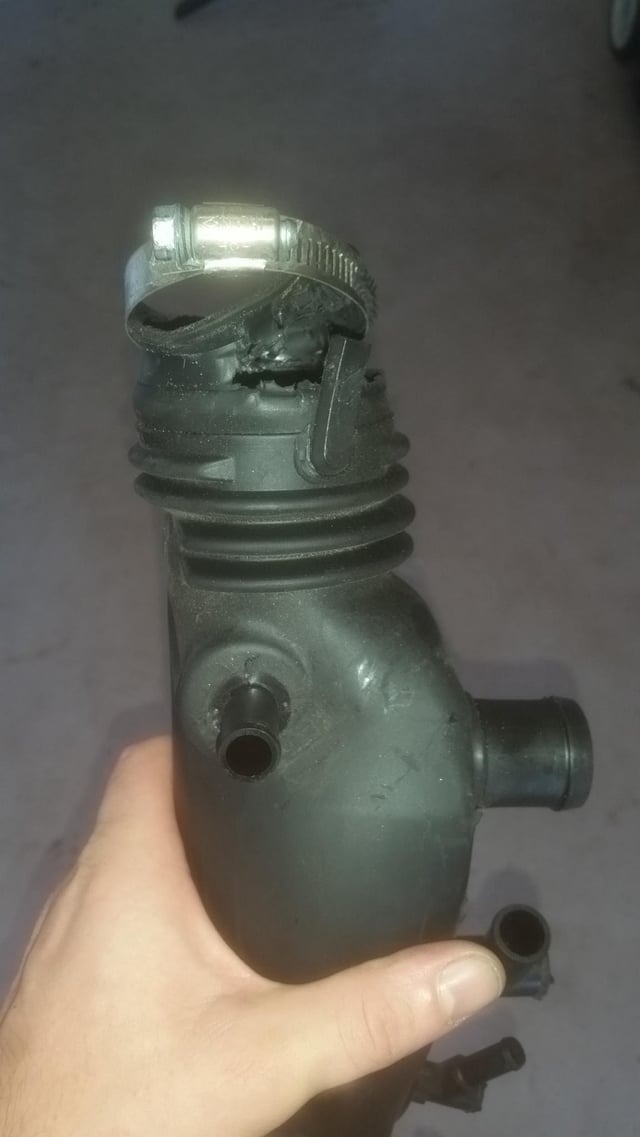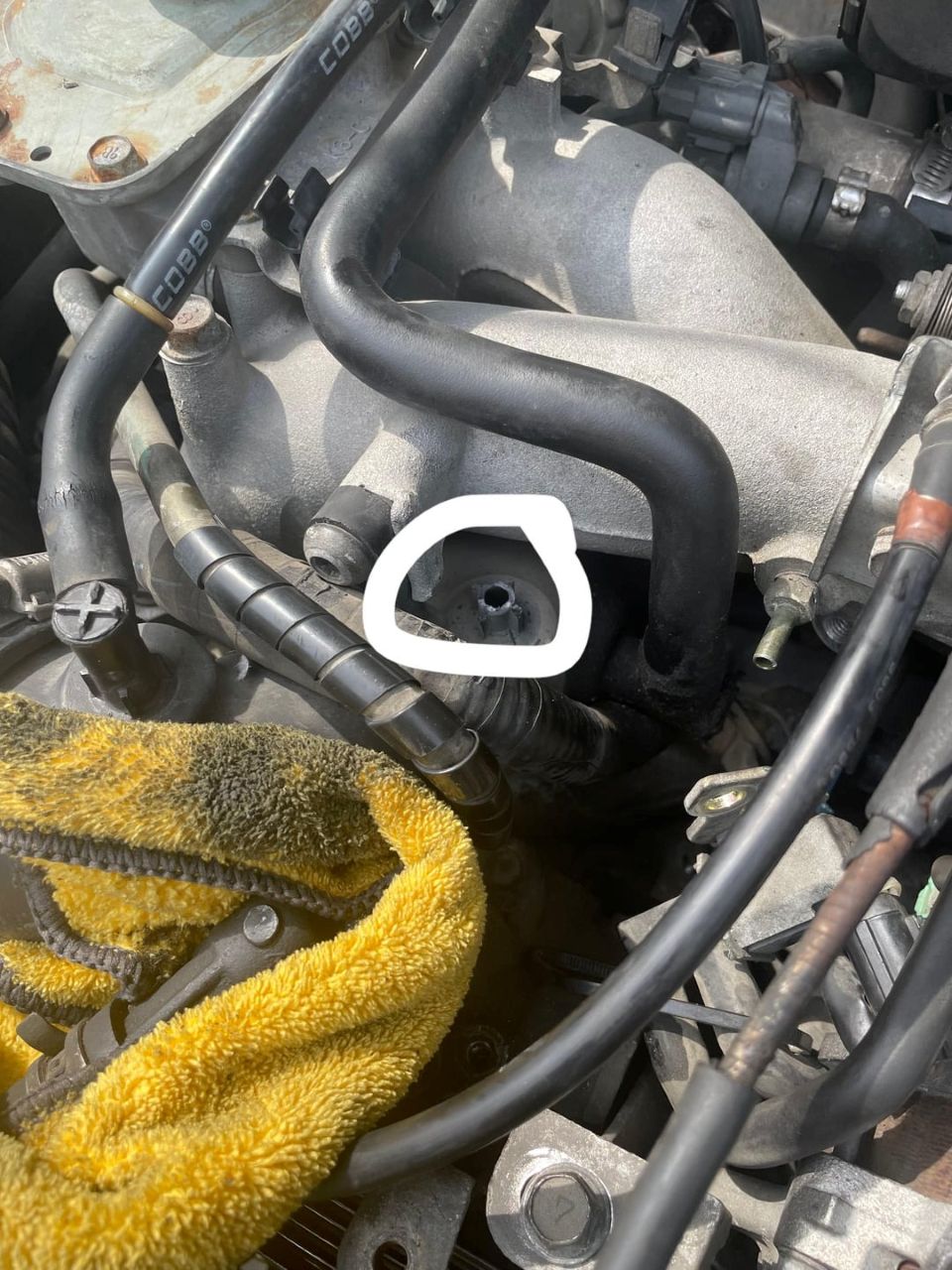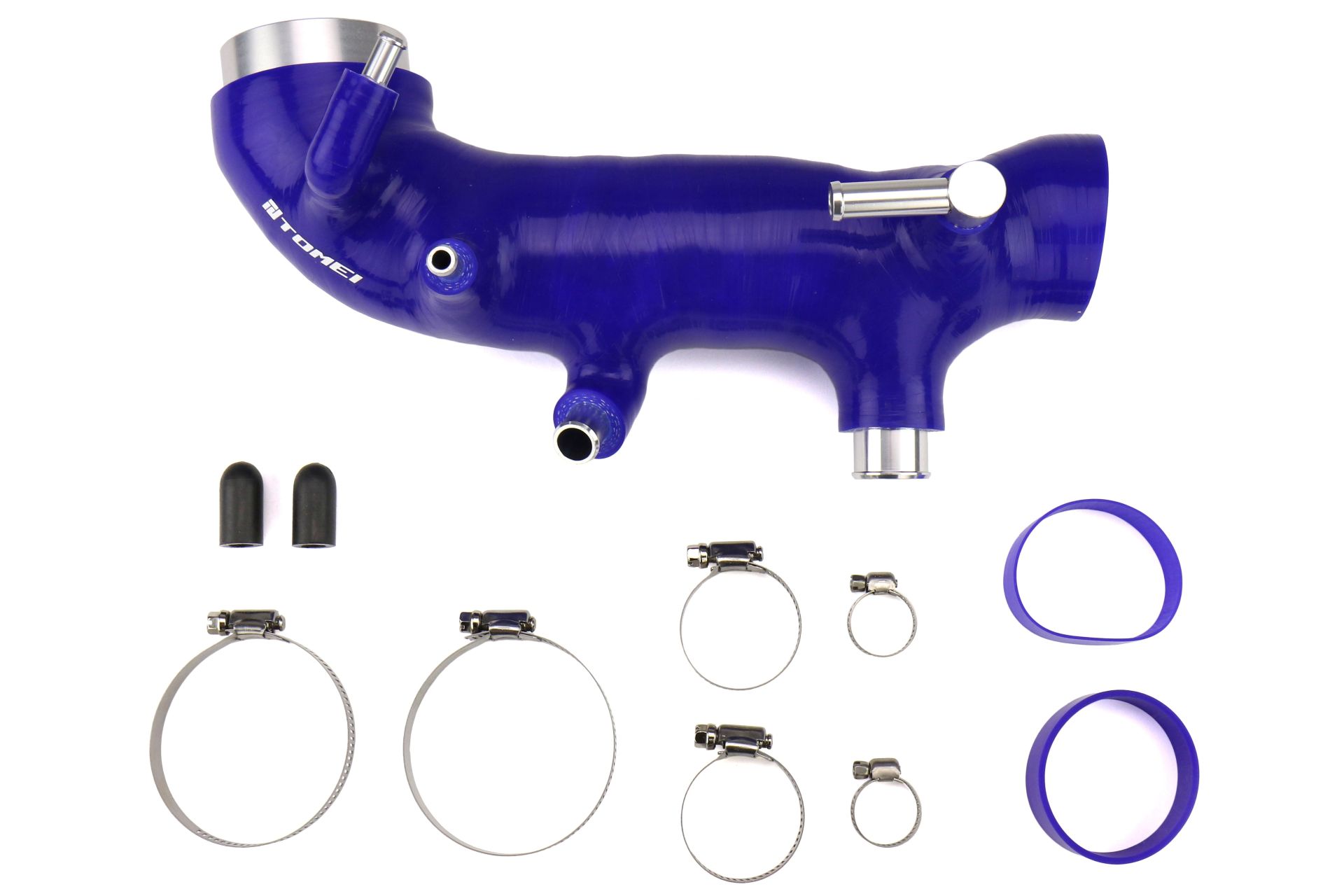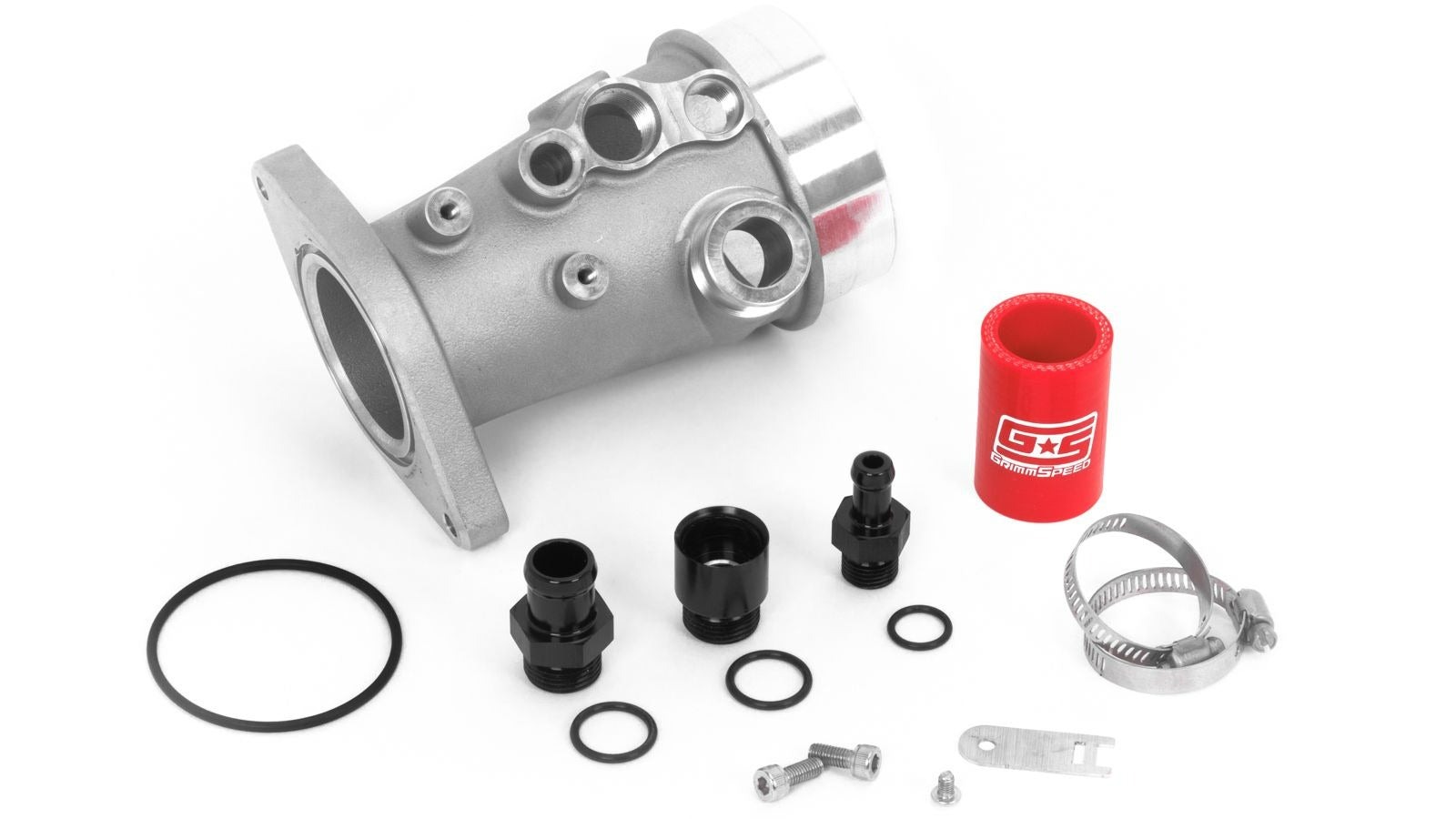PRODUCT FEATURE: Turbo Inlet Hose - Have You Upgraded Yet?
27 JUN 2025 - Jeff Willis
Everyone with a WRX, STI, or any other EJ XT variant will have to replace the OEM turbo inlet hose at some point. What many don’t realize is that this can really have an effect on your performance. Many can’t notice because physically it’s hard to see as the inlet runs under the intake manifold, and it’s disguised/buried at the turbo and under a handful of vacuum lines, and air hoses connected to the OEM inlet.
From the performance side of things, you are limiting your power potential. Your Subaru will fun at 75% power with a damaged inlet or more depending on how bad the leak is.
If you have one of the older models mentioned above, and if you can confirm that you have an OEM turbo inlet, now would be a good time to think about upgrading it because we’re going to discuss how a damaged OEM inlet can hurt your performance and your motor.
TURBO INLETS ON PRE-VA WRX MODELS
PERRIN 2.4” Inlet Hose 2002-2014 WRX / 2004-2021 STI
Your turbo inlet hose is pre-turbo and post MAF (mass air flow meter). So, it connects between your turbocharger, and your MAF. There are a few contributing factors that lead to failure. Naturally over time and mileage, your factory turbocharger’s oil seals will give out, and can push oil from the compressor housing and it is normal to find a film of oil if you ever have replaced your throttle body hose. This film of oil can also coat the interior of your OEM turbo inlet which will cause the rubber to deteriorate. Eventually, the OEM inlet hose will tear apart specifically at the hose clamp connecting to the turbo.
The problem is that now it is creating a leak that the parameters between your ECU and your MAF will not recognize because now it is trying to compensate for unmetered air. So, this will cause a lean condition. If you are running lean under boost, then you are causing potential engine damage and detonation if the lean condition is enough to where you are hitting fuel cut.

As you can see in this picture of an OEM turbo inlet hose, it is torn where the hose clamp tightens on the compressor cover of the turbocharger. As the turbo sucks in air, the hose will collapse with age and deterioration. When it tears open the turbo is sucking in a higher volume of air because it is no longer sealed by the inlet hose, and the airflow going through the MAF will not match the engine’s RPM. Meaning that if you are hitting higher boost then your MAF should be expecting a corresponding level of airflow. If you are leaking air through your inlet hose and the airflow going through the MAF doesn’t match your engine speed, boost targets, and engine load, then a wrong signal will be sent to the ECU. This is what causes a lean condition because the ECU is not increasing the fuel tables to match the engine load and boost targets because the unmetered air leaking through the inlet will not match the engine load.

And remember, the OEM inlet hose won’t just tear at the clamps, the vacuum hose connections will break as pictured above, and they can also tear at the accordion flaps. Any place where there is a leak will cause a lean condition in the inlet hose.
THE SOLUTION.
Tomei Silicone Turbo Inlet Hose 2002-2014 WRX / 2004-2021 STI
Now the Tomei unit pictured above is not the only solution. But any aftermarket example that we carry will be the solution as well. And here’s why:
Killer B Motorsport EJ Cast Aluminum Turbo Inlet 2002-2007 WRX / 2004-2021 STI
Every aftermarket unit that we sell features multi-layer silicone construction or cast aluminum construction that will be the end-all-be-all of turbo inlets. These are strong enough where they will not deteriorate or tear with time or chemical exposure. And from a performance side of things, the interior walls are smooth and not corrugated like the OEM hose which eliminates any internal turbulence during acceleration, leading to better response throughout the entire RPM range.
Most importantly. A solid turbo inlet hose is needed to maximize the efficiency of any aftermarket intake system you have whether it be a cold air, short ram, or even a better flowing drop-in panel filter. If you are still utilizing the OEM inlet hose on any older WRX or STI, you risk losing the performance due to any leaks, and a leaking turbo inlet hose will certainly mess with your tune.
(IN7)
PERFORMANCE INLETS ARE NOT ONLY FOR EJ’S
GrimmSpeed V2 Aluminum Turbo Inlet 2015-2021 WRX
Although thick plastic can last longer than a traditional rubber inlet hose, that doesn’t mean that it isn’t immune to heat and the elements. Example: Any plastic BMW valve cover. Over time and miles, they crack. The same can happen with VA WRX OEM plastic inlet hoses. Luckily as we demonstrate above, the installation is fairly simple if you are even slightly mechanically inclined and know how to safely support your Subaru on jack stands.
But speaking of installation, the best thing to do is wait until your engine is cool obviously because your turbo makes all the heat. Most of all, take your time. The guys from PRE Racing do an excellent job showing us how to install an aftermarket silicone unit:
THE FINAL WORD:

Most of the older generation WRX, STI, and other XT variants will have an upgraded turbo inlet hose. However, there are still many out there who lack the upgrade. And we get it, it can be a little tough to do, but taking your time is the key to success. This is a must-do mod that is both a preventative and performance upgrade. And leaks in your inlet hose can slow your performance. They can trigger a check engine light, and your car will run terribly if the leak is bad enough. No amount of mods you have will matter if you have a damaged inlet hose. If you still have an OEM inlet hose, do yourself and your Subaru a favor, and make the upgrade happen.
CLICK HERE FOR ALL UPGRADED INLET HOSES
CLICK HERE FOR ALL COLD AIR INTAKE UPGRADES



